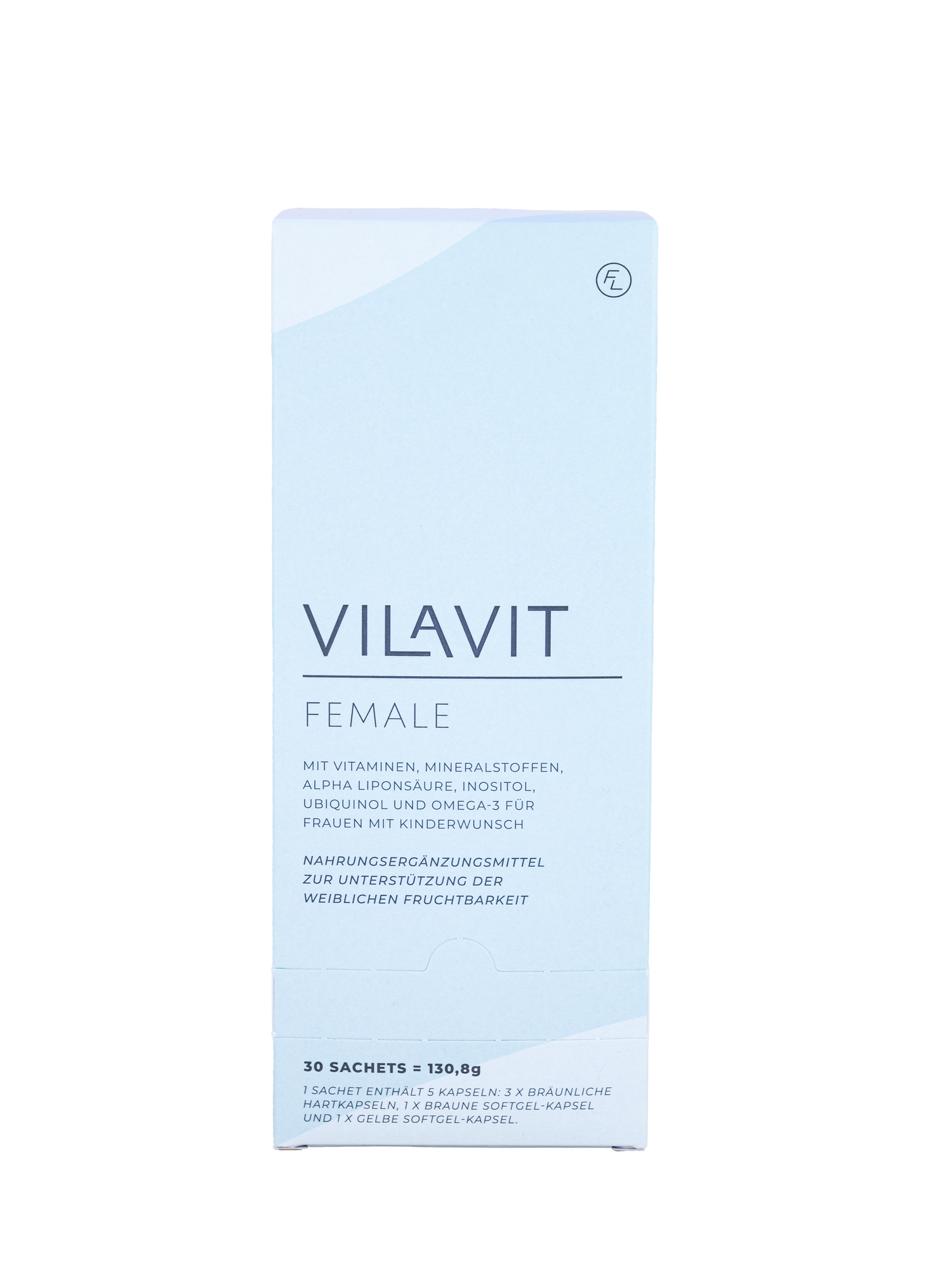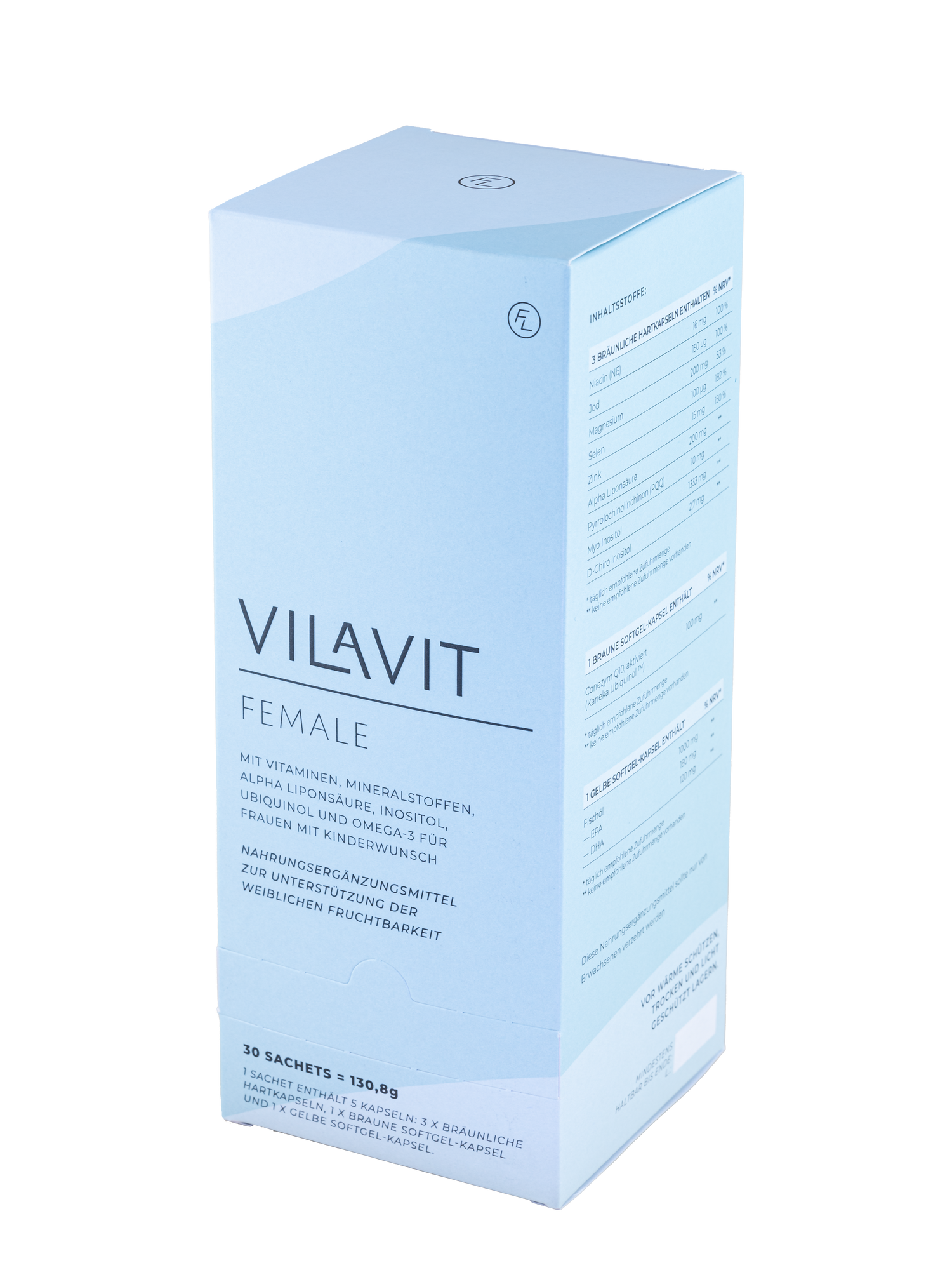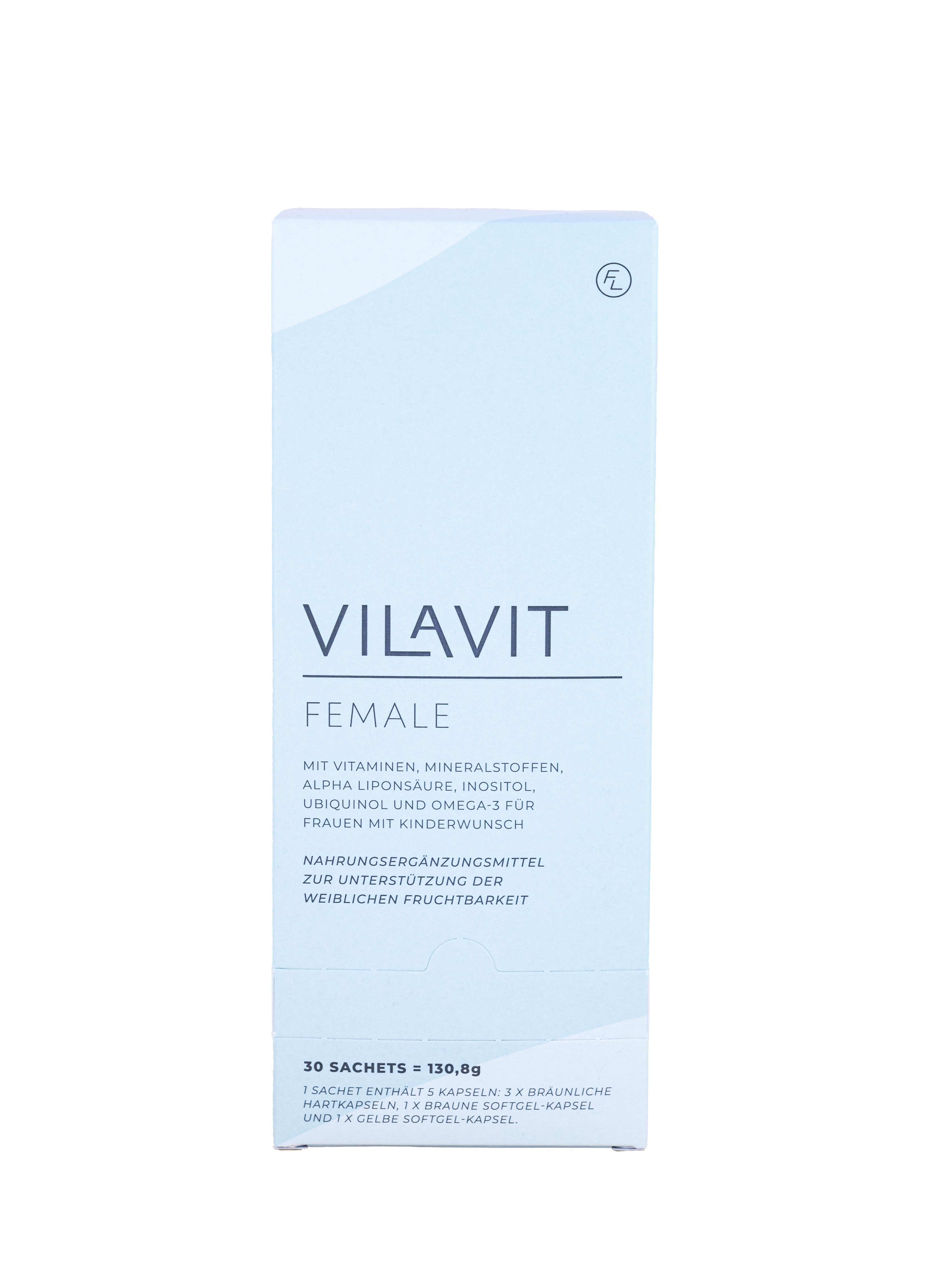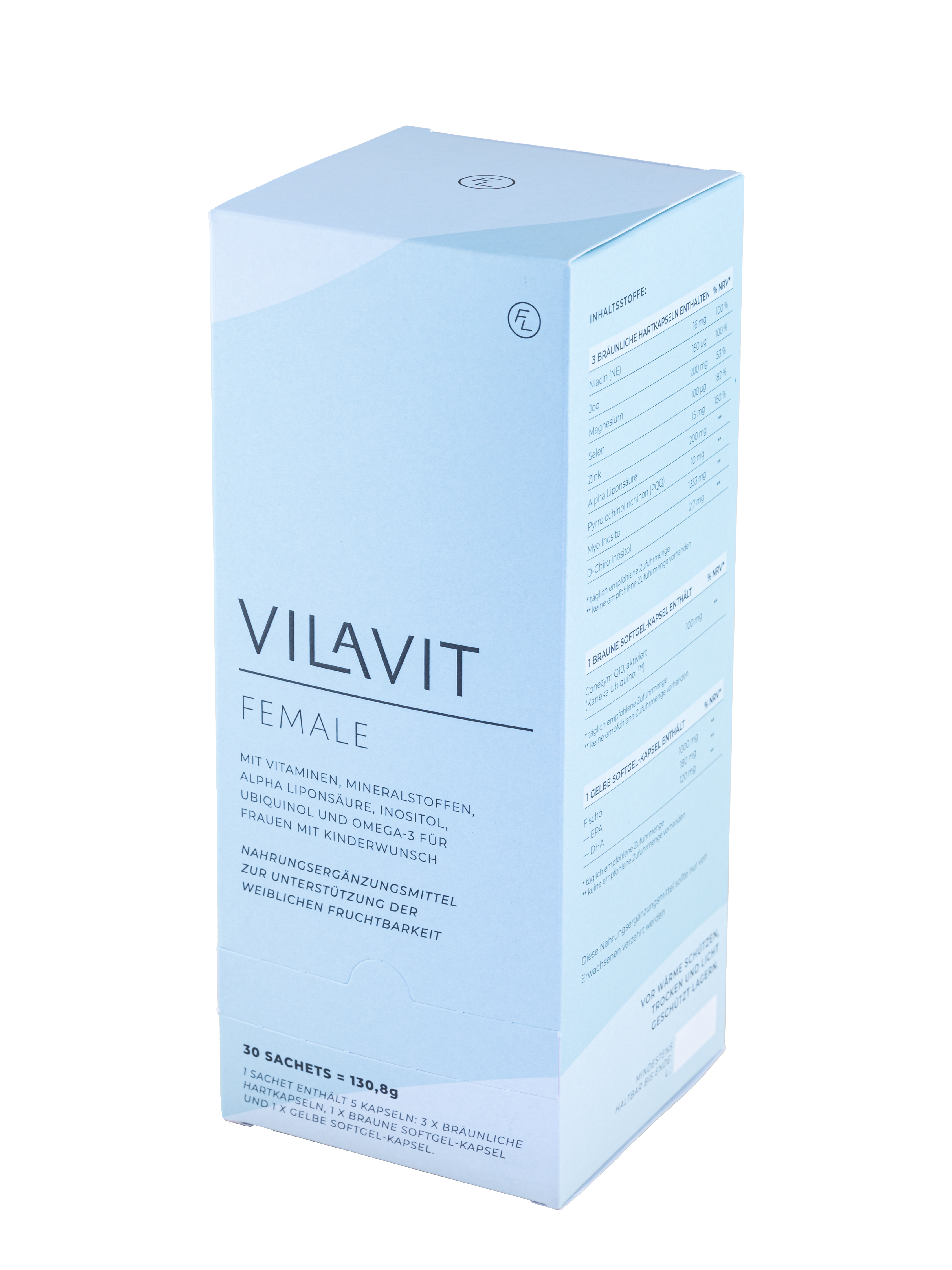Implantation, also known as nidation, is a critical process in which the fertilized egg, or embryo, embeds itself into the uterine lining (endometrium).
It's a highly intricate process that depends on the quality of the embryo and the receptivity of the uterine lining. Both factors must be perfectly synchronized.
Implantation Window, Endometrial Thickness, and Structure of Endometrium is Crucial
The implantation window for embryos occurs between the 6th and 10th day after ovulation. This period is seen as the optimal phase for implantation, as the uterine lining is ideally developed to support the embedding of the fertilized egg. The hormone progesterone makes the uterine lining receptive to the implantation window. Before this, estrogen hormone leads to the thickening of the lining. The ideal thickness of the lining varies from study to study, but generally, a thickness of at least 7 to 8 millimeters is considered favorable. Some experts even recommend a thickness of 9 millimeters or more for optimal implantation conditions.
It's also crucial that the endometrium is composed of three layers. Each layer has its own function, and if one of these layers doesn't function properly, it can negatively affect the chances of pregnancy:
The basal layer serves as a stable foundation for the regeneration of the lining and allows for continuous nutrient and growth factor supply. The functional layer provides a thick, well-vascularized layer rich in nutrients and proteins necessary for the survival and growth of the embryo. The basal lamina plays a role in maintaining the structure and function of the lining and in the interaction between the lining and the embryo during implantation.
Embryo Quality Embryo quality plays a crucial role in the successful implantation of the embryo and depends on both egg and sperm quality.
The following characteristics define embryo quality:
- Cell count and symmetry
- Cell morphology: Healthy embryos have normally shaped cells with intact cell membranes and even distribution of the cell nucleus.
- Fragmentation: Low fragmentation, meaning the presence of small broken cell parts, is a sign of good embryo quality. High fragmentation levels may indicate cell damage and reduce the chances of successful implantation.
- Genetic integrity: The genetic integrity of the embryo is crucial for its viability and implantation chances. Embryos with a normal chromosome count and no genetic abnormalities have a higher likelihood of successfully implanting and enabling a healthy pregnancy.
- Implantation potential: Some IVF clinics use advanced assessment methods like time-lapse imaging and genetic tests to evaluate an embryo's implantation potential. These methods can help select embryos with the highest implantation potential.
The Gardner embryo/blastocyst grading system is a common method used by embryologists to assess embryo quality, determine embryo development, and ultimately evaluate the potential for success. The system consists of three parts: a letter and two numbers (e.g., 4AA, 2BA, 5AB).
The Number
This number indicates the blastocyst's developmental stage or the degree of expansion of the embryo's cavity. (5 is the best).
1: Early blastocyst – the embryo's cavity (blastocoel) is less than half the volume of the embryo.
2: Blastocyst – the embryo's cavity (blastocoel) is greater than or equal to half the volume of the embryo.
3: Full blastocyst – the embryo's cavity (blastocoel) completely fills the embryo.
4: Expanded blastocyst – the volume of the embryo's cavity (blastocoel) is larger than that of the early embryo, and the zona pellucida is thinning.
5: Hatching blastocyst – the trophectoderm has started to penetrate through the zona pellucida.
6: Hatched blastocyst – the blastocyst has completely escaped from the zona pellucida.
The Letters
After the number, two letters follow. These letters represent the two parts of a 5-day embryo (also called blastocyst):
1st Letter: Quality of the inner cell mass (ICM), which becomes the fetus. A – C (A is the best).
2nd Letter: Quality of the trophectoderm cells (TE), which become the placenta. A – C (A is the best).
Possible Causes of Implantation Failure
The process of implantation is one of the most complex on the path to a successful pregnancy. Various reasons, such as hormonal imbalances and luteal phase deficiency, structural problems of the uterus (lining), lack of specific nutrients, insufficient embryo development, failure of the embryo to hatch, incorrect timing of implantation, issues in the messenger reaction between mother and child, immune reactions including an increased proportion of natural killer cells (NK cells), and unhealthy lifestyle habits such as smoking and excessive alcohol consumption can lead to implantation failure.
Promoting Implantation
Medication Immunosuppressants are often administered, which inhibit the body's immune response and can be supportive in cases of increased natural killer cell (NK cell) levels.
Hormonal Fertility clinics support post-ovulation by administering hormones, usually progesterone, to optimize the development of the uterine lining and promote implantation.
Anticoagulants can increase blood flow to the uterine lining and thus support implantation.
Micronutrients
Omega-3 fatty acids: Omega-3 fatty acids, particularly docosahexaenoic acid (DHA), play a crucial role in regulating the immune system. An increased proportion of natural killer cells can negatively affect implantation. DHA, with its anti-inflammatory effect, can help reduce this reaction and thus improve the chances of successful implantation.
Vitamin D: A deficiency in vitamin D has been linked to reduced implantation ability. Vitamin D plays an important role in regulating the immune system and inflammatory processes, which are crucial for healthy implantation.
Folic acid (Vitamin B9): Although folic acid is known for its crucial role in neural tube development, it can also support implantation by promoting blood circulation and improving the uterine lining. Selenium: With its antioxidant effect, selenium contributes significantly to the quality of the egg, which is relevant for fertilization and implantation.
Niacin and Vitamin B2: These micronutrients support the formation and maintenance of the uterine lining.
Additional Tips for Promoting Implantation
Reduce stress: Chronic stress can negatively impact the entire reproductive process, including implantation. Relaxation techniques such as yoga, meditation, and breathing exercises can help reduce stress and increase the chances of successful implantation.
Maintain a healthy diet: A balanced diet rich in fruits, vegetables, complex carbohydrates, lean protein, and healthy fats can support overall health and the suitability of the uterine lining for implantation.
Avoid nicotine and excessive alcohol consumption: These can negatively affect overall fertility. Studies have shown that toxins in tobacco can lead to suboptimal development of the uterine lining in smokers. Men should also avoid nicotine, as it negatively affects sperm quality.
In summary, implantation is a complex process influenced by many factors. By considering a healthy lifestyle, balanced nutrition, stress management, and targeted intake of micronutrients, the likelihood of successful implantation can be increased. However, it is important to consult a specialist if there are persistent implantation failures or concerns to undergo all necessary examinations and receive appropriate treatment recommendations.















